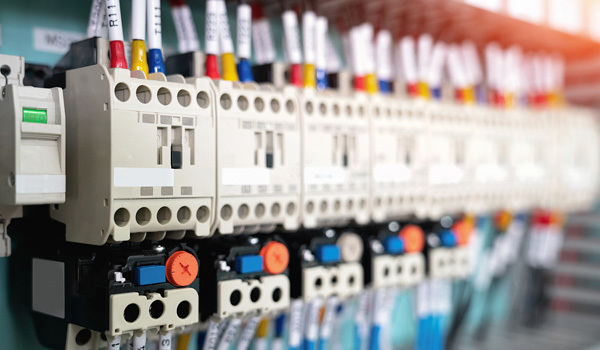What is the purpose of a vacuum contactor in semiconductor manufacturing?
Publish Time:
2023-08-04
Source:
Tongyi Xiguang
In semiconductor manufacturing, cleaning and etching processes are required for the chip surface. Due to the oxygen-free and dust-free characteristics of a vacuum environment, using a vacuum contactor can effectively remove surface impurities and ensure a high-quality cleaning and etching process.
In semiconductor manufacturing, vacuum contactors are primarily used in the following areas:
1. Cleaning and Etching: During semiconductor manufacturing, the chip surface requires cleaning and etching. The oxygen-free and dust-free nature of a vacuum environment allows vacuum contactors to effectively remove surface impurities and ensure a high-quality cleaning and etching process.
2. Deposition: Semiconductor manufacturing requires surface modifications with deposited layers, such as metal or compound deposition. Vacuum contactors can control gases, evaporation sources, and ion beams for surface deposition modifications in a vacuum environment.
3. Vertical Encapsulation: During semiconductor chip packaging, the chip is typically placed in a sealed container, and a vacuum contactor controls the air pressure during encapsulation. This helps ensure the stability and reliability of the packaging process.
4. Testing and Inspection: After semiconductor chip manufacturing, testing and inspection are necessary. Vacuum contactors can control the connection and disconnection of testing instruments for accurate testing and inspection under vacuum or special atmospheres.
In summary, vacuum contactors play a crucial role in semiconductor manufacturing. By providing a reliable vacuum environment, they ensure cleanliness, precision, and stability throughout the manufacturing process. This helps improve the quality and performance of semiconductor chips while reducing external contamination.
Related
Types and Selection Guide for Air Contactors
2025-07-01
High-pressure vacuum contactor
2024-09-14
Structure and Design of Vacuum Contactors
2024-03-16
How to use a high-voltage vacuum contactor
2023-08-08
Contact Number:+8613623894894
Contact Number:+8615136360288
Email:13623894894@126.com
Address: No. 1, High-tech Road, Hebin Street Office, Yichuan County, Luoyang City, Intelligent Equipment Industrial Park
COOKIES
Our website uses cookies and similar technologies to personalize the advertising shown to you and to help you get the best experience on our website. For more information, see our Privacy & Cookie Policy
COOKIES
Our website uses cookies and similar technologies to personalize the advertising shown to you and to help you get the best experience on our website. For more information, see our Privacy & Cookie Policy
These cookies are necessary for basic functions such as payment. Standard cookies cannot be turned off and do not store any of your information.
These cookies collect information, such as how many people are using our site or which pages are popular, to help us improve the customer experience. Turning these cookies off will mean we can't collect information to improve your experience.
These cookies enable the website to provide enhanced functionality and personalization. They may be set by us or by third-party providers whose services we have added to our pages. If you do not allow these cookies, some or all of these services may not function properly.
These cookies help us understand what you are interested in so that we can show you relevant advertising on other websites. Turning these cookies off will mean we are unable to show you any personalized advertising.
Copyright © Luoyang Tongyi Xiguang Electric Co., Ltd. This site supports IPV6







